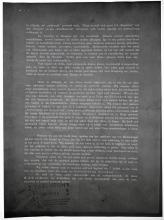Moving to Hong Kong
Primary tabs
In September 1915 we left Wei Hai Wei for Hong Kong, our father
having been appointed to the Victualling Store Office in Kowloon.
I was almost five years old and Audrey was three.
We went to live at Eden Court, a boarding house in Kowloon run by
Mrs. Railton. It was a large house with a garden and tennis court,
and a bamboo grove. We were told not to go into it, because
of the bamboo snakes, but we could not resist eating the soft
tightly rolled new leaves of the bamboos.
Mamma and Dadda played tennis and Audrey and I made friends
with Peggy and Sidney Searle, whose father was Dadda's superior
in the Victualling Store Office. We used to visit Dadda in his
office. He had a telescope, and I was allowed to look through it
at the ships in the harbour.
The next year, 1916, Mamma, Audrey and I were back in Wei
Hai Wei, staying with our friends the Jennings. Perhaps Mamma was afraid of the hot Hong Kong summer! We stayed in Wei Hai Wei until the Autumn. And now there is a vivid memory of an
evening in the Jennings' sitting room, and Mamma calling out to
Auntie Daisy, "Oh Daisy, I've just seen the new moon through the window!" (an evil omen to superstitious people). The next morning a telegram came from Hong Kong saying that Dadda was dangerously ill.
By the time the next steamer arrived from Hong Kong, Wei Hai Wei
was in the grip of an unusually early winter. The Jennings came to
see us off, and I have heard that when they arrived back home, they found their goldfish frozen solid in their bowl!
It is not difficult to imagine our poor Mamma's feelings. This may
have been the occasion that Audrey and I remember when Mamma
was seasick in the cabin even before the ship left the harbour. The
five or six days' journey down to Hong Kong must have been a
nightmare to her.
Dadda died in February 1917 and was buried in Happy Valley
cemetery. He was aged 40, Mamma was 31, and Audrey and I,
4 and 6.
The Treaty Port Returned
On the 1st October 1930 Wei Hai Wei was returned to China
in a grand ceremony. The harbour was full of warships of the
Royal Naval China Fleet, under the command of
Admiral Sir A.K. Waistell, R.N., as well as ships of the Chinese
Navy. The Commissioner, Sir Reginald Johnston, handed over the
administration to Mr. Wang Chia-cheng, Vice-Minister for Foreign
Affairs, speaking in Chinese and English. And to the sound
of Royal Naval guns roaring in salute, and Chinese crackers
exploding, the Chinese Nationalist flag was raised over Government
House to fly with the Union Jack.
The next day the Chinese flag flew alone over Government
House, and Wei Hai Wei had gone back to China. We were not present at the handing over, but the "South China Morning Post"
reported the ceremonies fully.
Within a few weeks the Jennings and our other friends had left
Wei Hai Wei, and for us our birthplace became only a memory.
But at least four of us have the gift of dual Chinese-British
nationality.

